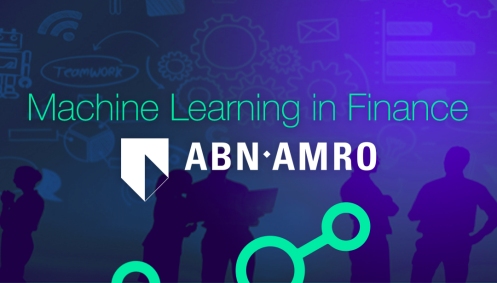The Lancaster County school board has identified three finalists for the next superintendent – Dr. Jonathan Phipps, Dr. Carlotta Redish and Dr. Matrell Sturkey.
All three finalists work in S.C. school districts – Phipps in Abbeville, Redish in Spartanburg and Sturkey in Florence. One has worked in Lancaster County before. Phipps, the only finalist who is currently a superintendent, was here for 19 years before leaving in 2014.
“We’re impressed with how committed and passionate to children these three educators are,” said Bobby Parker, chairman of the school board. “Throughout their careers, they’ve worked to make a difference for children.”
Parker said the finalists share the district’s mission to make every decision based on what’s best for children.
“Any one of them would bring a wealth of experience and knowledge to our district,” Parker said.
The board is now scheduling individual visits so each of the three finalists can meet district staff and the community. Residents will have a chance to meet the finalists through drop-ins and an interview by a panel of community members.
The board received 17 applications for the position, which is being filled after the announcement of Superintendent Gene Moore’s upcoming July retirement.
Through those applications, the board identified the three finalists.
Dr. Jonathan Phipps, 44
Phipps is the superintendent of the Abbeville County School District. Phipps has served Abbeville’s 11 schools since 2014.
Phipps said, if chosen, his goals are to increase student engagement, make sure teachers are teaching the standards and to increase the graduation rate.
“I know there’s a lot of wonderful teachers and administrators” in Lancaster County, Phipps said. “I’d love to come back and be a part of it.”
Phipps said as superintendent he would also focus on the growth in Indian Land.
He said knowing the county well should set him apart from the other candidates.
Phipps said after spending almost two decades in LCSD, it’s “very exciting and humbling” to be chosen as a finalist.
In 1995, Phipps began his career in education as a teacher at Barr Street Middle School. He later served as site administrator for Indian Land Elementary and Middle schools’ summer program, assistant principal of ILES and ILMS, principal at A.R. Rucker Middle, principal at Buford High and the district’s director of secondary education.
Phipps was also an adjunct professor at South Piedmont Community College from 2005 to 2007.
Phipps, who was born in Tennessee, has an undergraduate degree in history and education from the University of North Carolina at Charlotte and a master’s degree in early childhood education from the University of South Carolina. He has an educational specialist degree in educational administration and a doctorate in leadership in educational administration from Capella University.
Phipps said he enjoys traveling, camping with his wife, Michelle, and “chasing the ball around” on the golf course.
Dr. Carlotta Redish, 52
Redish is now assistant superintendent for human resources for Spartanburg School District 7, which has about 7,300 students.
Redish said she is “honored” to be named a finalist.
“I would love to be a part of all the good things that are going on there,” Redish said. “Lancaster is just a great place to be.”
Redish said her work in leading leaders has prepared her to serve as superintendent.
Her focus for the county is to build on the “great work Dr. Moore has completed” and preparing students to be college- or career-ready.
“I know that I have skills needed to get the job done,” Redish said.
Raised in Gaffney, Redish began a career in education as a teacher in Georgia in the late 1980s. She went to work for the Los Angeles Unified School District as the dean of students for Monroe High School in 1999. She also served there as an assistant principal for two elementary schools and as secondary literacy specialist.
In 2006, Redish moved to Cherokee County School District. There she was principal of B.D. Lee Elementary, then moved on to become the district’s director of personnel, associate superintendent for administrative services and instruction, interim superintendent and associate superintendent for accountability and planning.
She has served in Spartanburg School District 7 since 2013.
Redish has three degrees from USC – an undergraduate degree in political science, a master’s degree in secondary education and a PhD in child development. She has an educational specialist degree in educational administration from Jacksonville State University.
Redish said she enjoys spending time with her family and serving as youth adviser at her church, Island Creek Baptist Church.
Dr. Matrell Sturkey, 49
Sturkey is assistant superintendent for personnel services at Florence School District 1, which has just over 17,000 students.
Sturkey, originally from Marion, said she looks forward to working with school board members to accomplish their goals, which include addressing growth in Indian Land.
Sturkey said she’s honored to be chosen as one of the three finalists.
“It’s a great district,” she said. “Great programs, great initiatives. I would look forward to working with the students, faculty, staff and the community.”
Sturkey’s interest in the position reflects LCSD’s mission statement – putting children first.
“I have a heart for children,” Sturkey said. “It has always been my priority to put students first.”
In 1990, Sturkey started her career in education as a teacher in Dillon School District. She then served as assistant principal and principal at Johnakin Middle in Marion.
She became personnel director for Florence School District 4 in 2007. In 2009, she became director of curriculum and instruction, and at the same time served as principal for Brockington Elementary.
Sturkey served as interim superintendent of Florence School District 4 for five months in 2012.
Sturkey has an undergraduate degree in elementary education from Francis Marion College, a master’s in education administration and supervision from Winthrop University, and a doctorate in educational leadership from Nova Southeastern University.
Sturkey and her husband, Leon, have two daughters. Sturkey said she loves to spend time with her family and read.
To view the original version on Carolina Gateway, visit: http://www.carolinagatewayonline.com/content/school-board-names-3-superintendent-finalists

